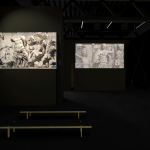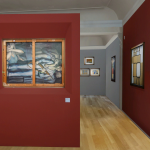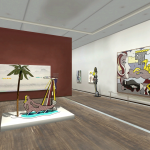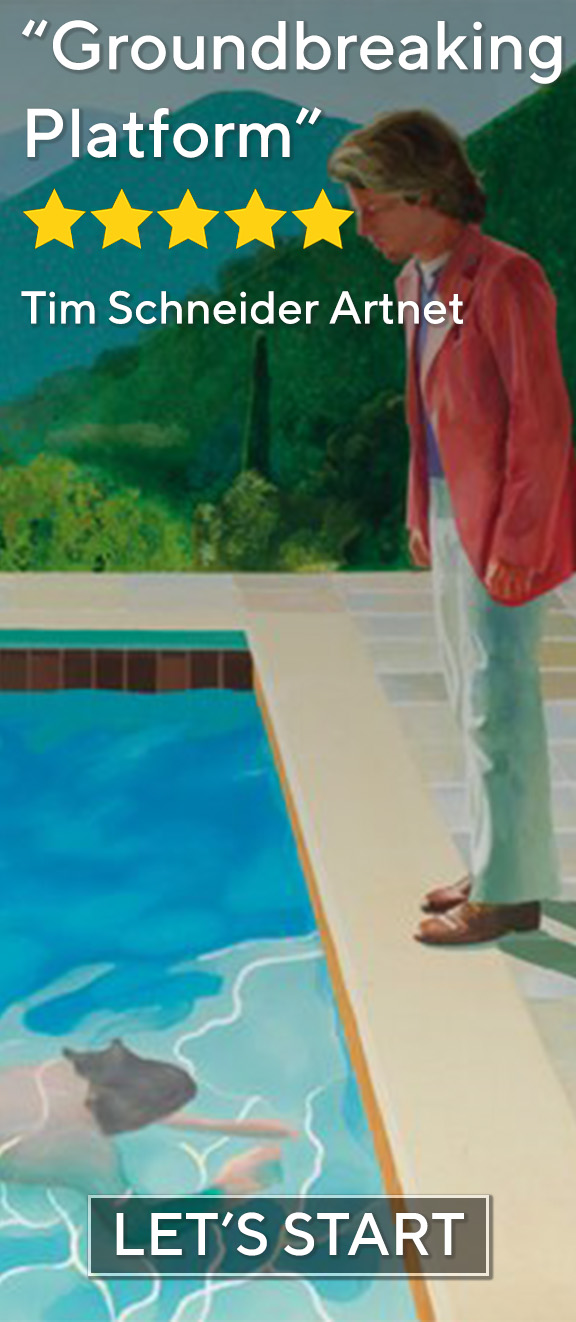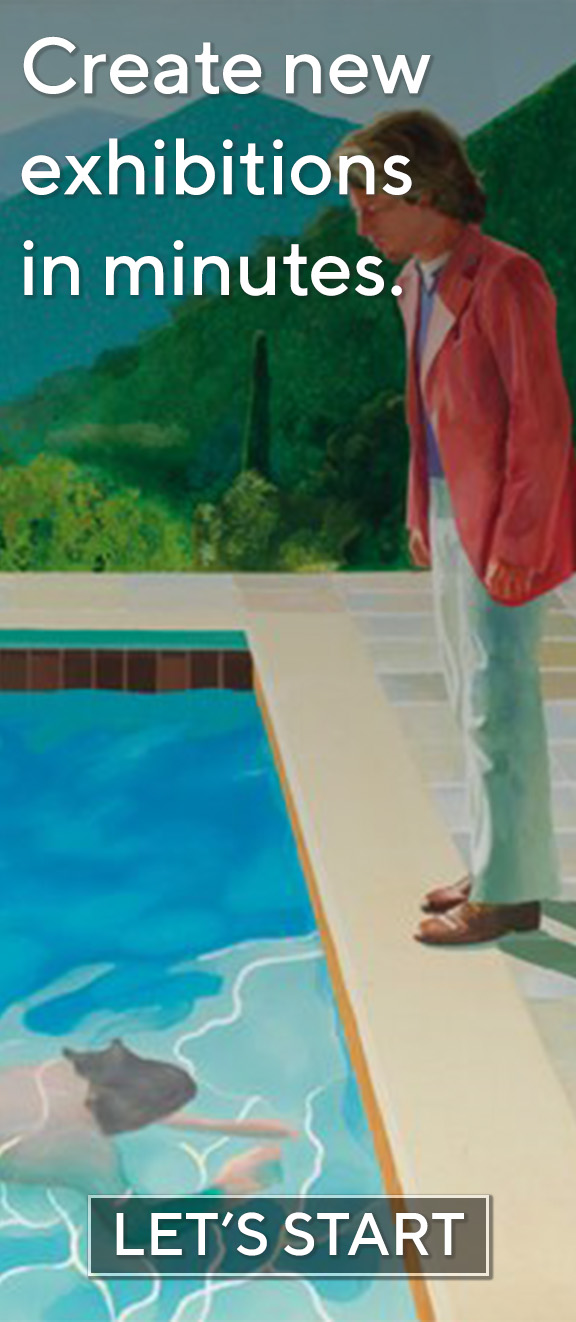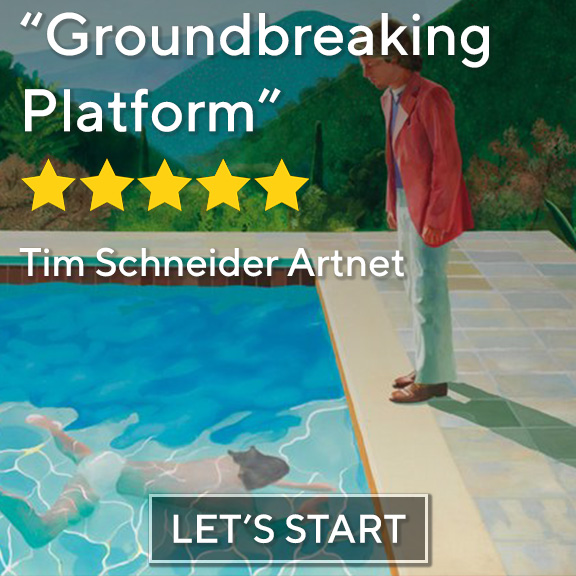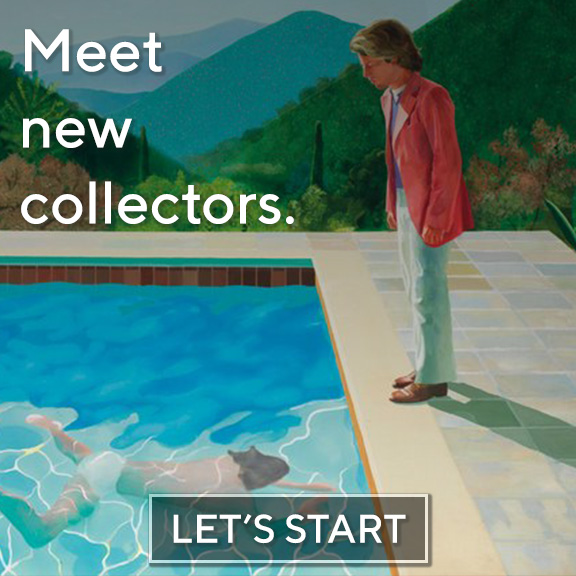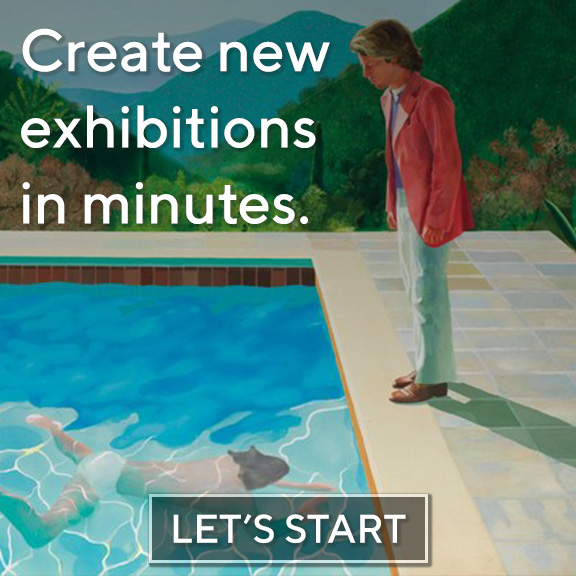Galerie Kleindienst
Leipzig, Germany
Christoph Ruckhäberle
This time in our series of reviews we visit Christoph Ruckhäberle’s digitized exhibition through a three-dimensional model created by Galerie Kleindienst.
To know more, participate in the Online Opening of Galerie Kleindienst x Walter’s Cube at the 3rd of November via Zoom where the gallerist and the CEO will hold a talk about the artworks at 6pm (CET, Berlin) or 12.00pm (EST, New York). You can visit the exhibition via phone or desktop to walk around and experience the event as if you were there.
The New Leipzig School (the third generation of the Leipzig School) became known in the English-speaking world at the beginning of the 21th Century, through Neo Rauch’s international success. Predetermined by the historical background, the post-reunification climate of modern Germany to be exact, the movement was classified as melancholic and figurative.

Available on the Online Viewing Room
Both of those things were quite old-fashioned in the early ‘90s when Christoph Ruckhäberle (1972) studied at the Art Academy in Leipzig. In the West, whether we are talking about the former West Germany (formally the Federal Republic of Germany) or Paris, abstract painting was in after World War II, working after a model was out, and being ‘academic’ was almost a slur. But Leipzig stayed true to classical principles and was more technical than ever: “The difference between Leipzig and the other schools in Germany is that here there is more discussion about how to build the painting and less about what and why,” said Ruckhäberle.

Available on the Online Viewing Room
It’s easy to understand how the memory of the Iron Curtain made these artists stick with traditions and fix their gazes on the East and its far too real problems, even though the West struggled with this concept prior to 2002, calling the Leipzig art scene gloomy and boring. Time can be funny. 20 years later, the always judgmental part of the art world fell out of the frying pan and into the fire – now they are bashing the new figurative painting for being too trendy, using the term ‘wet painting’, which refers to works being sold before they can dry due to the demand.
While the world tries to decide how to be chic enough for the higher circles but not too fashionable to the point of mainstream, Ruckhäberle figured out how to bring laughter into smokey dens. His journey towards brighter colors and more pronounced ornaments made for a more pointed humor, one that can dissolve Doomsday Feelings through awkwardly placed figures and limbs.

Available on the Online Viewing Room
As Albert Camus realized that the only answer to inevitability and meaninglessness is not apathy but radical acceptance that can lead to a new chapter where man can form his own meanings, Ruckhäberle realized that there is fun in the smallness of everyday life. His pictures depict figures in familiar scenes, usually inside a home, doing their unremarkable business in remarkably hilarious ways. Life is only bearable when we laugh at it.


